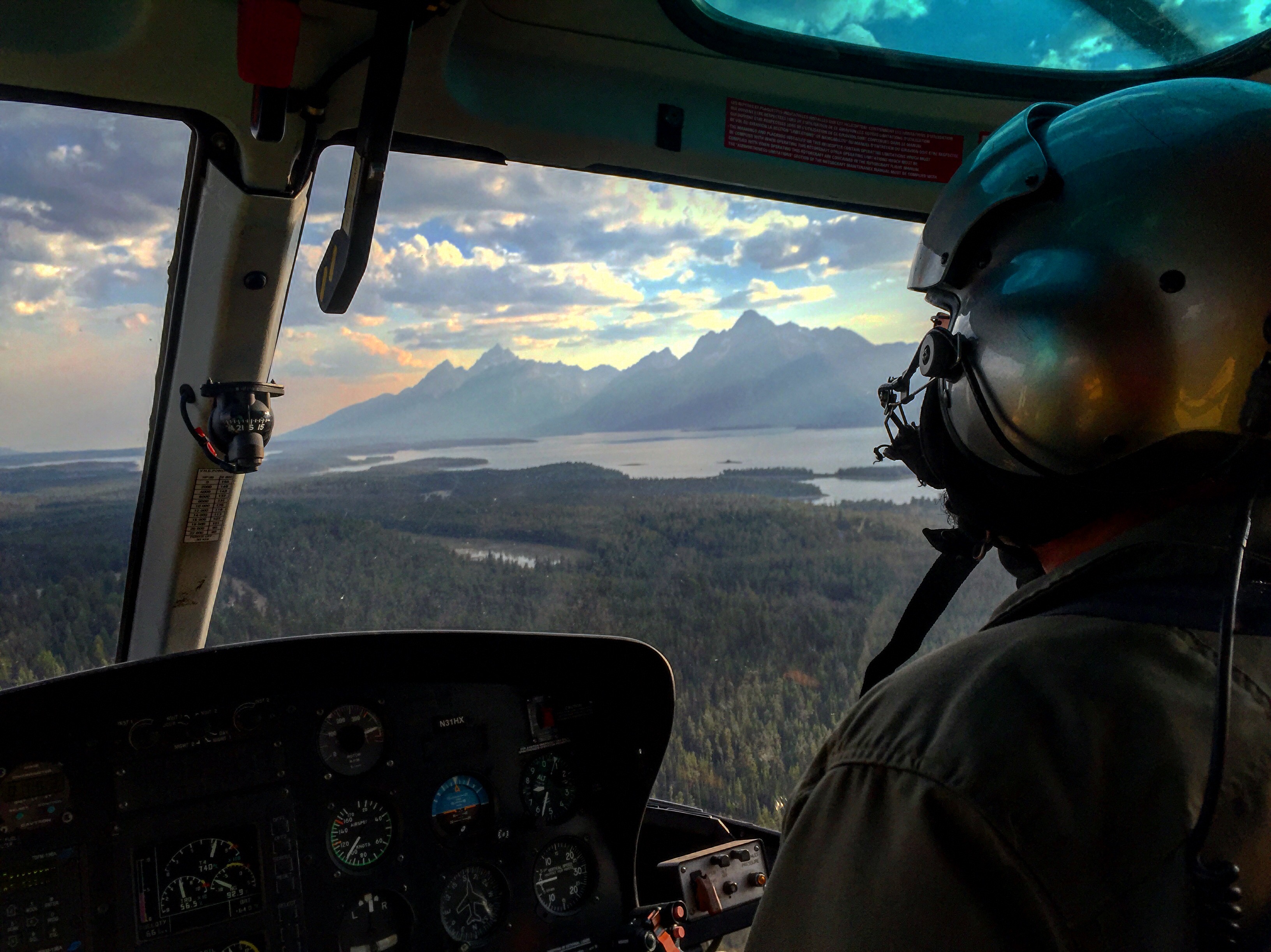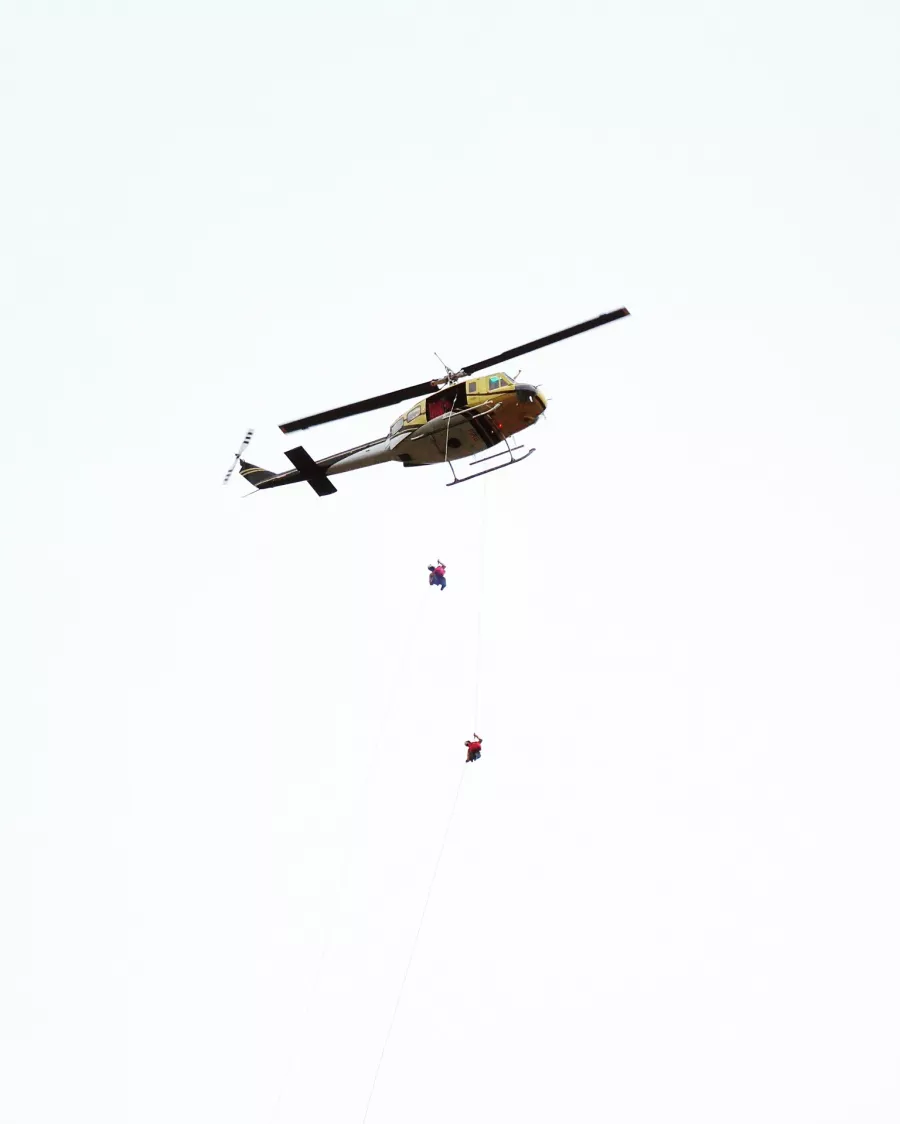It's fun. I don't get lowered, I rappel: meaning the helicopter is in a hover and ropes are dropped to the ground, then we slide down them. Seems like a semantics thing but there's actually a great difference when it comes to safety. It only lasts a few seconds--the ropes are 250 feet long and we go pretty fast. It's a lot of training and grit for 30 seconds of thrill.
It's very loud. We use Bell 205 or 212 mediums (civilians probably know them as Hueys) and they're great machines.
There is a complicated and very specific procedure of checks and double-checks and triple-checks on each rappeller and all of our equipment between the time we get the call and when we're actually sliding down that rope. And a lot of math. But once you're on the ground, that's it. It's just you and your partner and it's your job to size the fire up and see what you can do about it.
The purpose of rappelling is to deliver firefighters very quickly into remote areas (or fires that need to be acted on faster than crews can hike in). Rappelling is good for heavily timbered or steep fires where landing the helicopter is impossible.

